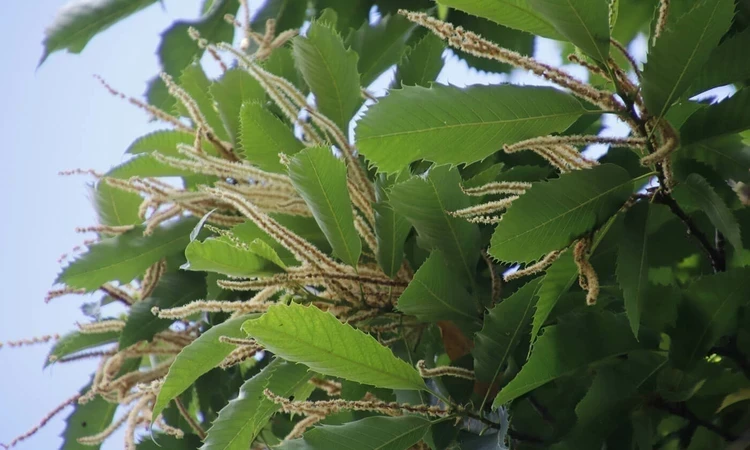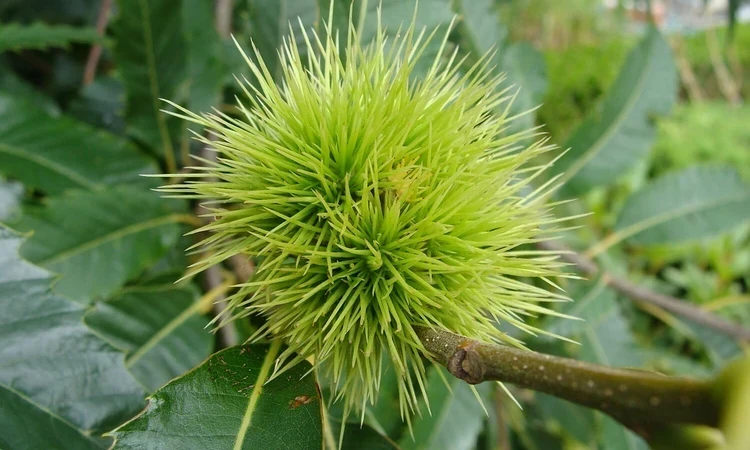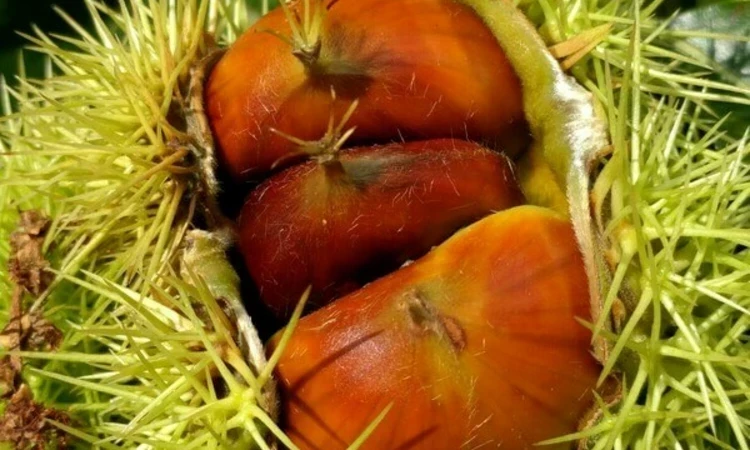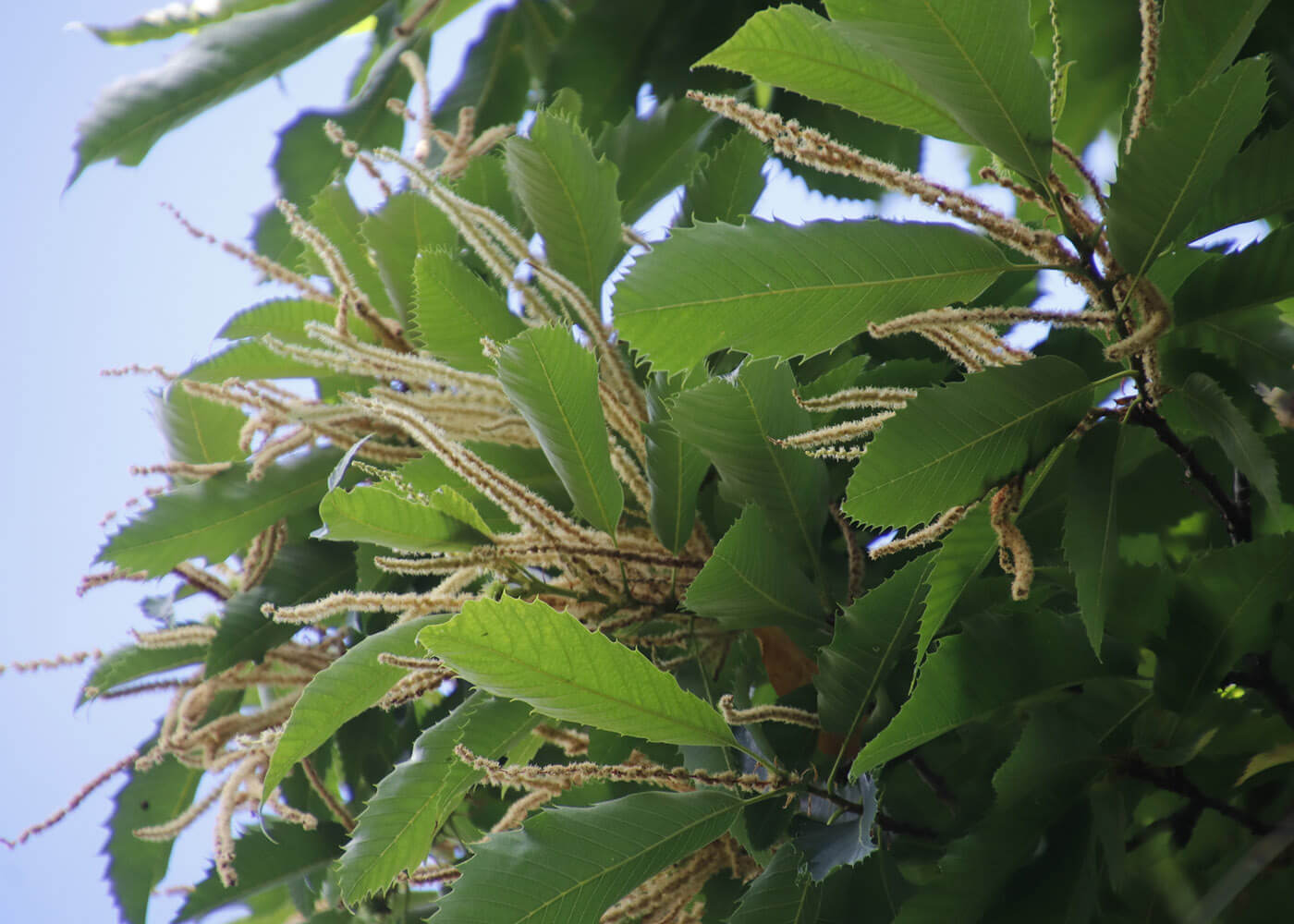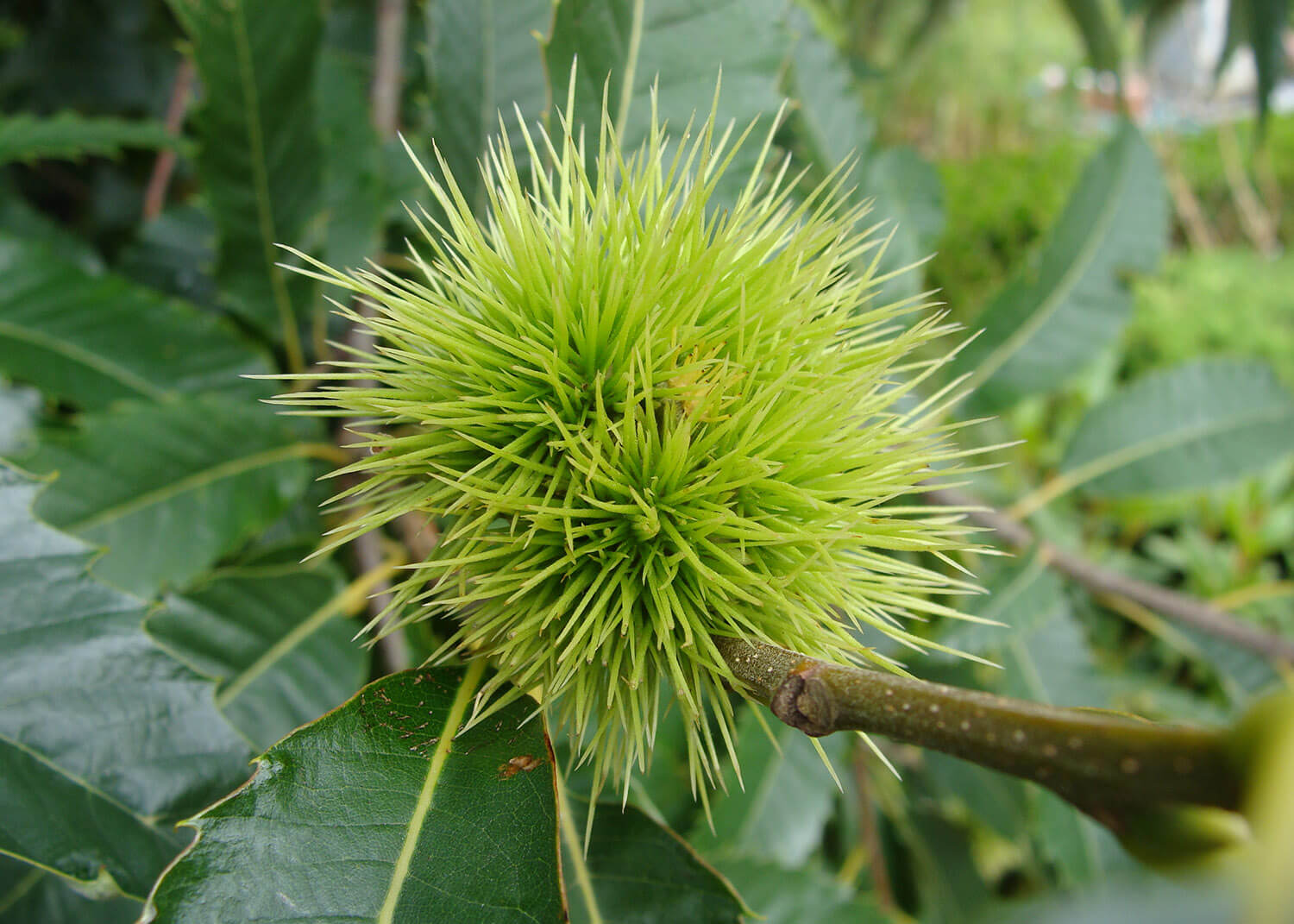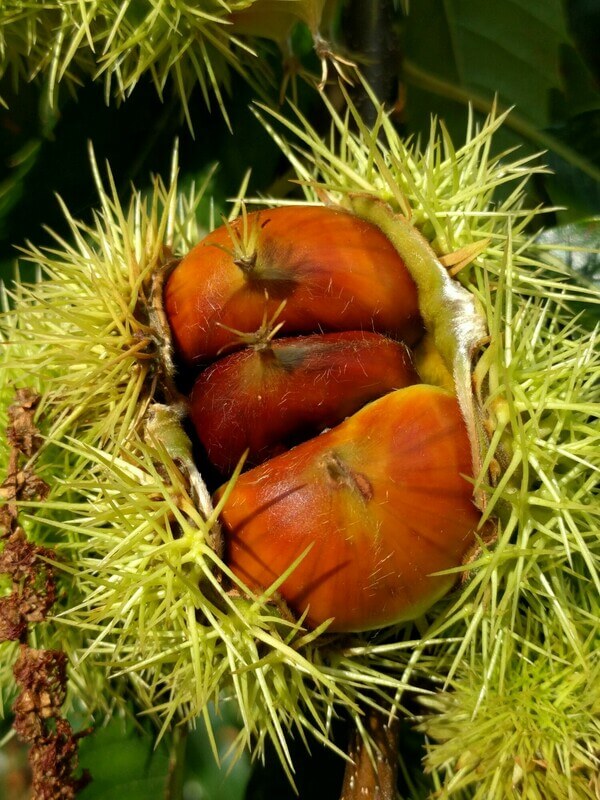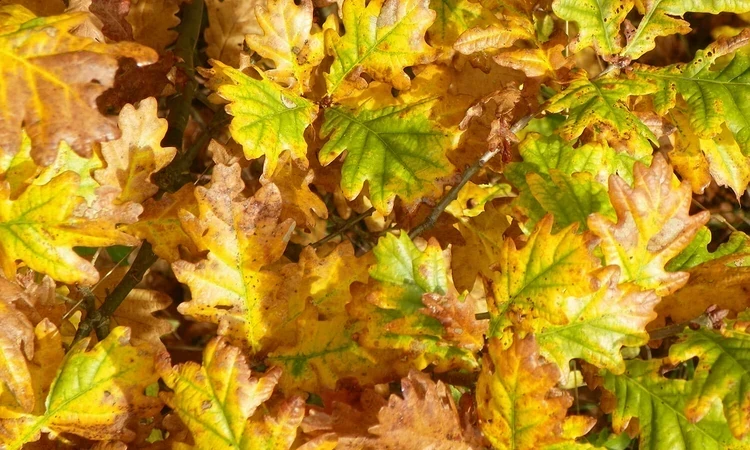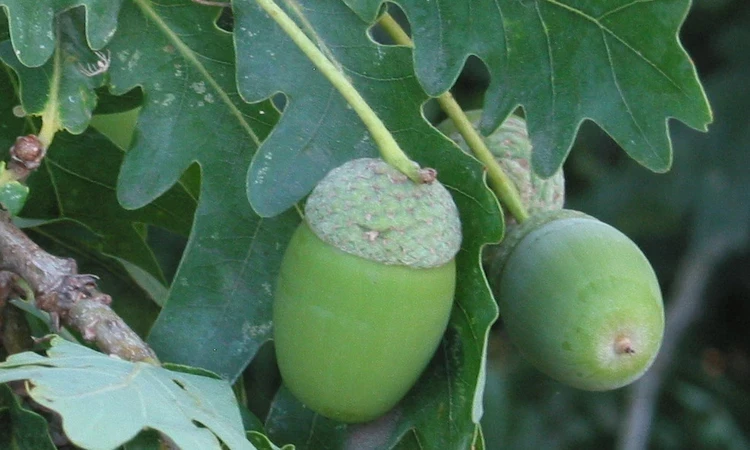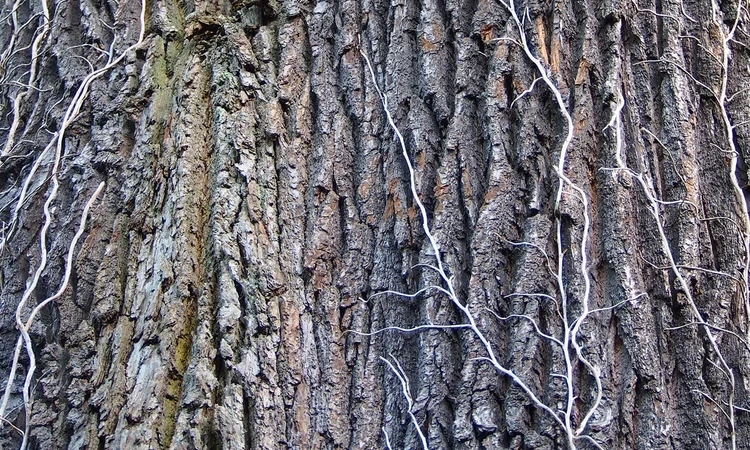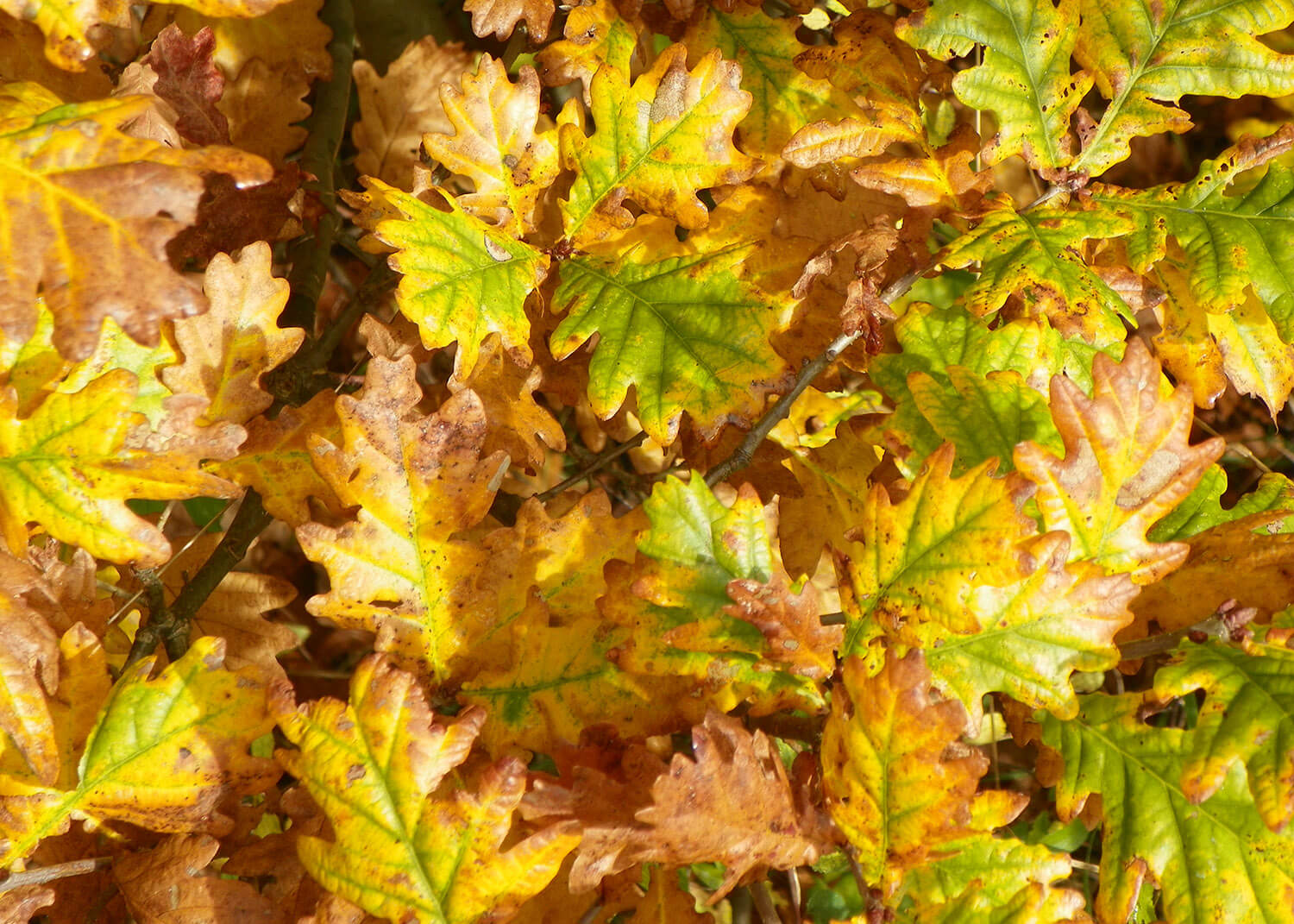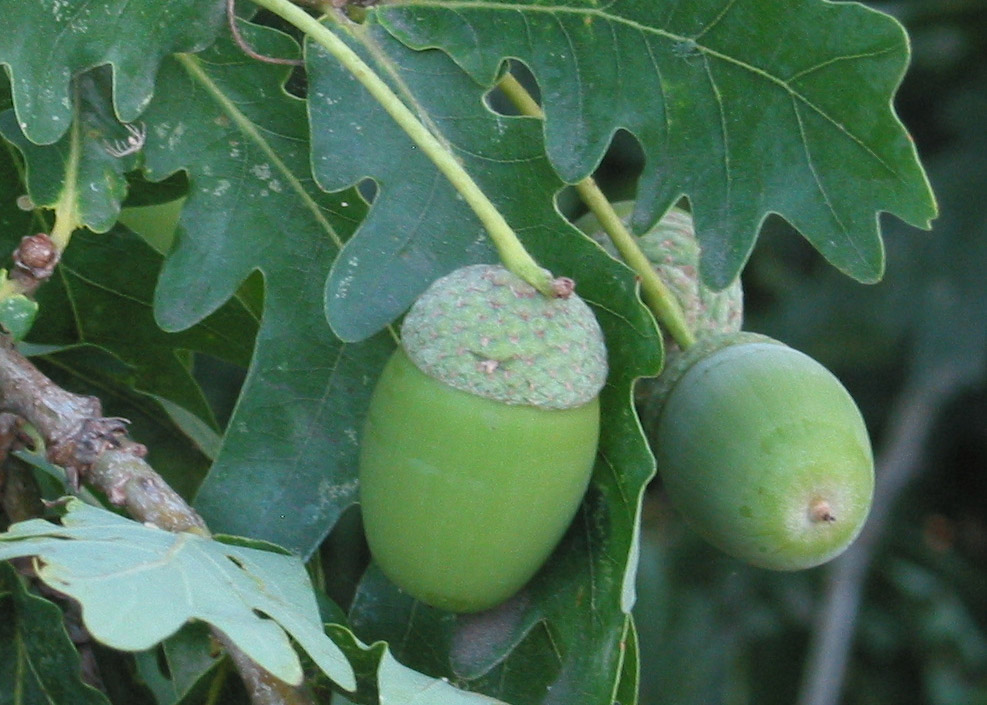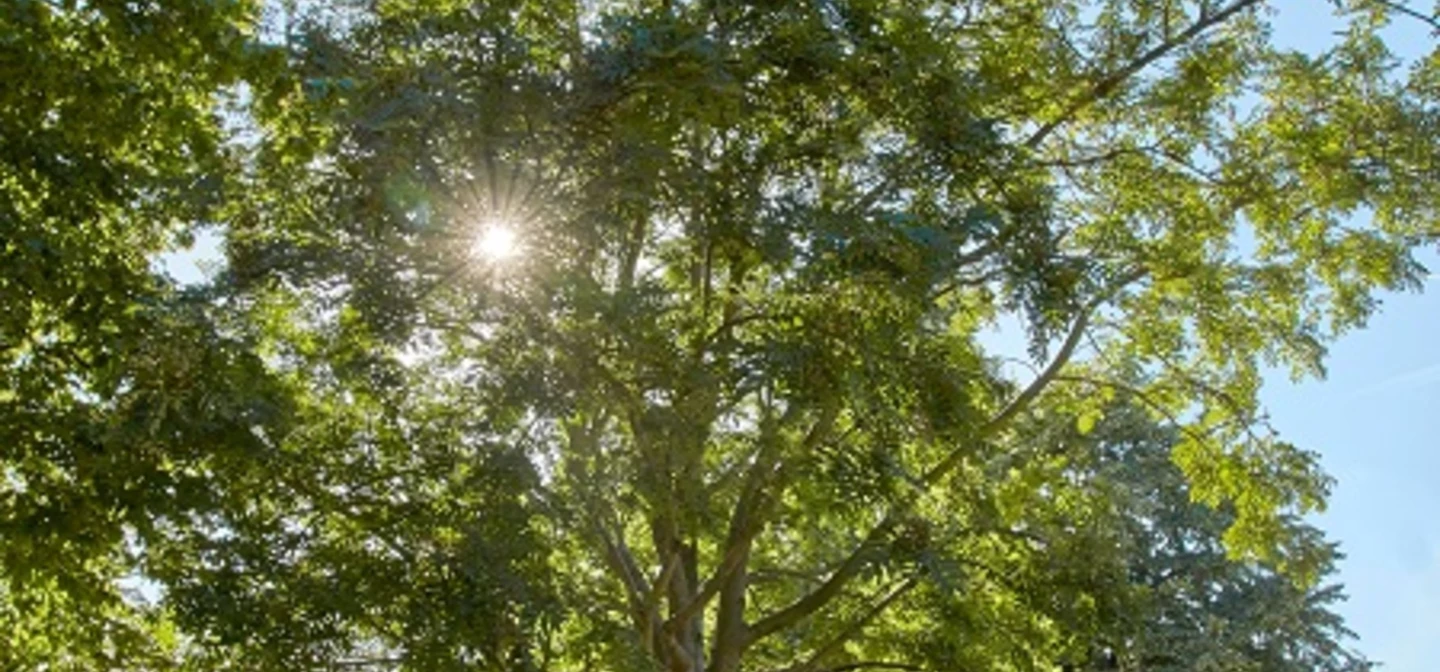
The trees of the Royal Parks
As the biggest plants on the planet, trees give us oxygen, store carbon, stabilise the soil and give life to the world’s wildlife. They also provide us with the materials for tools and shelter, connect us to the past and help protect the future.
There are over 170,000 trees in the Royal Parks, some of the oldest and largest living things in the landscapes. They help give the parks their different characters and are loved by wildlife and visitors alike. Our staff are no different. For National Tree Week 2023 we asked to pick some of their favourite trees, along with some insight from one of our expert arboriculturists.
Hawthorn
St. James’s Park and The Green Park
As a member of the rose family, the hawthorn has an abundance of nectar-rich flowers which provide a vital food source for the invertebrates living in the parks. While we manage deadwood habitat for invertebrates that live in and feed on decaying wood, having flowering trees and plants is also a crucial food source for a large range of invertebrates.
Hawthorn is an important tree to the history of St. James’s Park and The Green Park as before the parks were parks, Royal grounds, or hunting forests, there was a swampy marshland area known as ‘Thorney Island’. Thorney Island itself is the historic location that Westminster Palace is built on but the land around it (including St. James’s Park and The Green Park) formed a series of small rivers and small islands from the river Tyburn. It was known as Thorney Island as some of the dominant tree species were hawthorn and blackthorn. Today there is a large collection of hawthorn trees in the parks which look great and provide a link to the past.
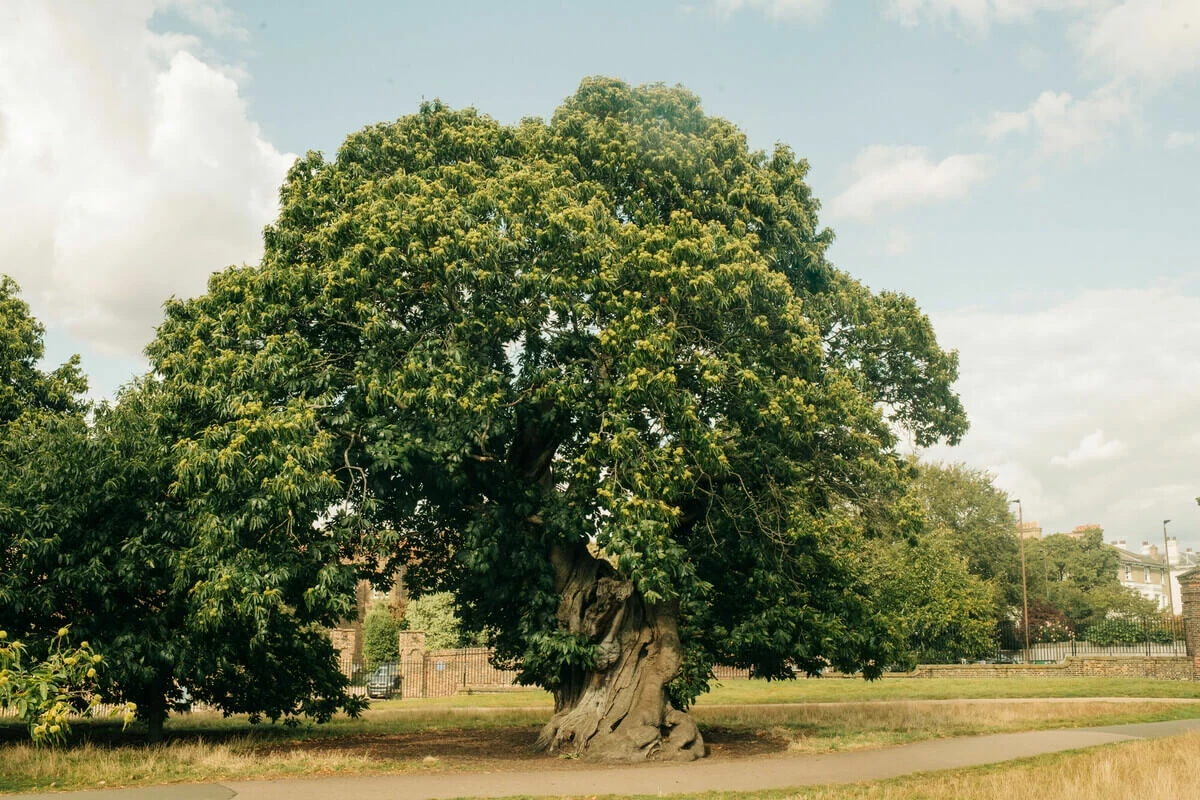
Sweet Chestnut
Greenwich Park
Something that makes Greenwich Park special compared to other parks in London is the collection of old sweet chestnut trees. While the view of the city, Greenwich Meridian and London Marathon may be most well-known, the sweet chestnut trees that date back to the ‘Grand Plan’ by Andre Le Notre in the 1660’s are arguably the park's greatest feature.
Sweet chestnut makes a particularly impressive old tree. As the tree ages the bark twists, creating a corkscrew pattern. It is normal for parts of the tree to die off, leaving large areas of deadwood on the trunk and branches. Older trees take on a gnarled form that is full of character.
It’s generally believed that the sweet chestnut was brought to England by the Romans. As the tree produces a nutrient and fat rich nut, it was a prized food source in the ancient world due to the versatility, ease of transport and nutrition that it provided. As the armies moved, they would plant new trees for food in the future; the nut was also ground down into flour to make a variety of breads and other foods.

Oak
Richmond Park
When you think of Richmond Park, two things probably come to mind: deer and oak trees! Richmond Park is an ancient hunting forest, which is part is the reason why it still has so many ancient oak trees today. As the park has been enclosed since the 1600s and been royal land since the 1200s, it has had a rare level of protection and landscape continuity that sets it apart from many other parks. The continual presence of deer and careful management has kept Richmond Park looking more or less the same for nearly 1,000 years, in contrast to the formal landscaping projects that have made some of the other Royal Parks what they are today.
The ancient oak trees of Richmond provide some of the rarest and most important deadwood habitats for invertebrate species in Britain. The deadwood conditions have developed over centuries and provide a variety of habitats from dead branches in the tree, dead wood on the ground, all manner of fungi and decaying wood in the trunk of the trees. Some of the rarest and most important habitats can be found at the base of cavities in the trunks of the oak trees; the long-term deadwood areas are decayed by a succession of invertebrates and fungi, the rarest of which can only live off of the late-stage decay which can take centuries to develop. This is why the continuity of landscape management and protection of these trees is so important.

Paulownia
The Regent’s Park
The Paulownia is one of the most spectacular flowering trees. The flowers emerge before the leaves do and form a foxglove shape, vivid purple trumpet-like flower. The tree proudly stands out, showing off its purple flowers which brighten up whole areas of the park. As the flowers change into seeds, these can be seen throughout the year before falling from the tree. As the seeds are so vast in number, lightweight and soft, they were used in packaging before polystyrene was invented. The tree also spread around the world, growing in port cities as the seeds were shipped to protect precious cargo.
The paulownia is also known as the empress tree and the princess tree. In Japan, aristocratic families would plant one of these trees when a daughter was born. As the tree grows so quickly, it would mature at the same time as the new family member. The tree would then be cut down to be used as furniture for the daughter in adulthood.
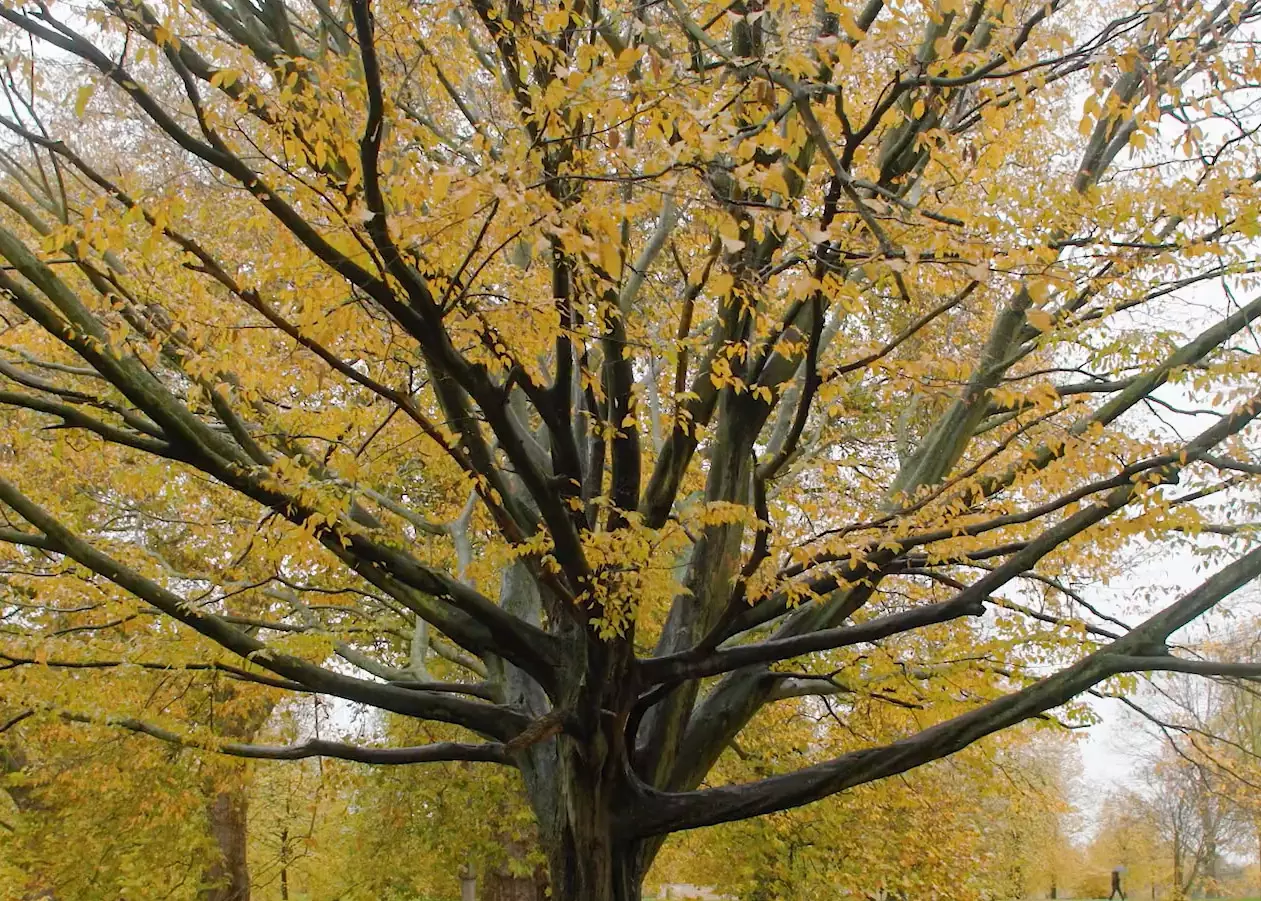
Hornbeam
Kensington Gardens
The word hornbeam comes from Old English, with ‘horn’ meaning iron and ‘beam’ meaning wood. So the hornbeam is the ironwood; this is reflected in the tree's traditional uses as the wood was used for load bearing timbers, the middle cog of a cartwheel and a variety of tool handles. Before London’s industry was fuelled by coal and metal, it would have largely been fuelled by firewood and charcoal. As the wood of the hornbeam burns for longer and hotter than many other species, its charcoal was a vital component of pre-industrial London.
Large areas of forest and woodland such as Epping Forest and the Great North Wood would have had hornbeam coppice and pollards that were regularly cut to fuel the city. The hornbeam tree is arguably one of the most important living things in the history of London!
You may also like...
-
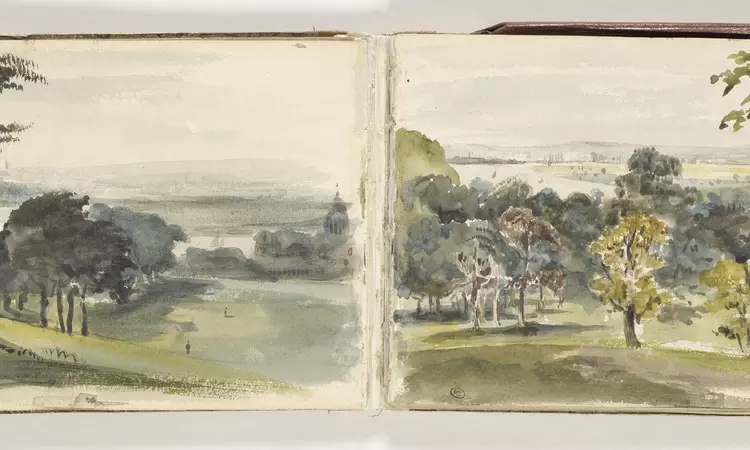
The trees of Greenwich Park
There are more than 3,000 trees in Greenwich Park including ancient chestnuts, veteran oaks, majestic planes and evergreen cedars.
-
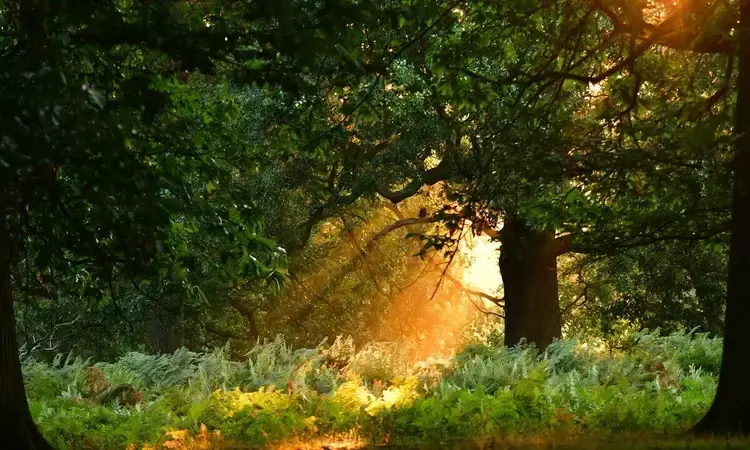
Why are trees so important?
Trees are vital. As the biggest plants on the planet, they give us oxygen, store carbon, stabilise the soil and give life to the world’s wildlife.
-

A day in the life of a Royal Parks arboriculturist
Find out what it's like to be a Royal Parks arboriculturist
-
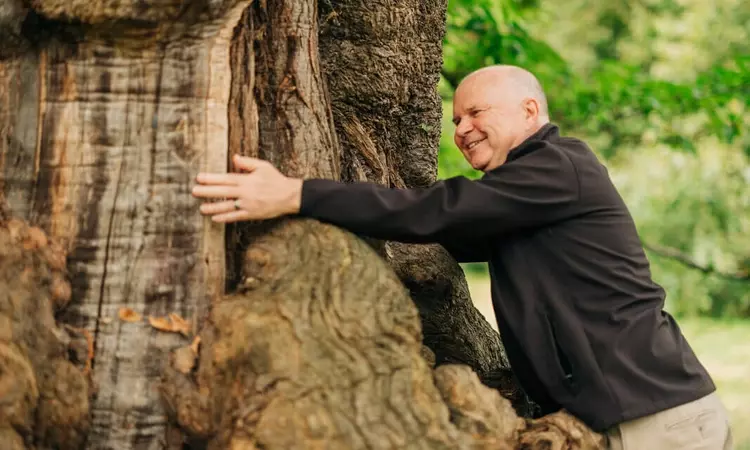
Together, we can care for our trees
The devastating effects of climate change cannot be overstated, and we can already see the impact of these changes across your parks.
Related Articles
-
 Read
ReadWhy are trees so important?
Trees are vital. As the biggest plants on the planet, they give us oxygen, store carbon, stabilise the soil and give life to the world’s wildlife.
-
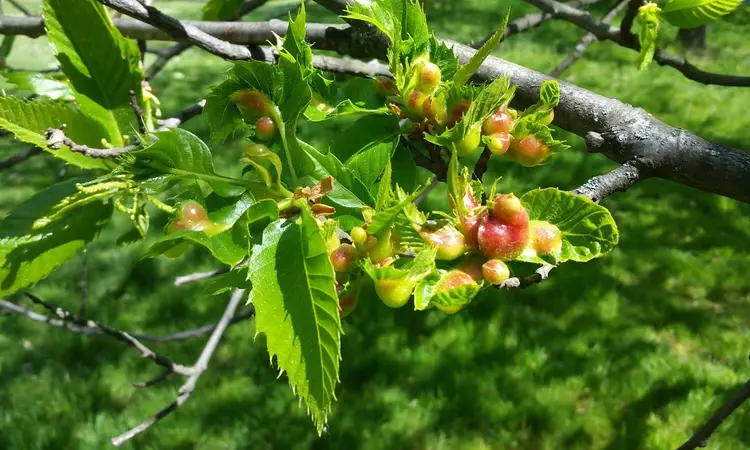 Read
ReadTree Diseases: Taking Care of London’s Trees
Managing tree disease within the Royal Parks
-

Enhancing the historic viewpoint at One Tree Hill
We are delivering an exciting project to improve access to One Tree Hill and enhance the seating area.
